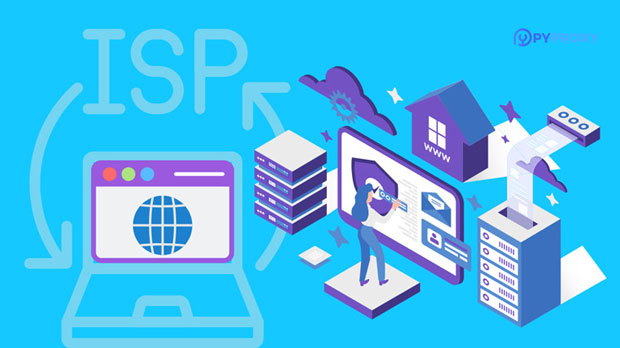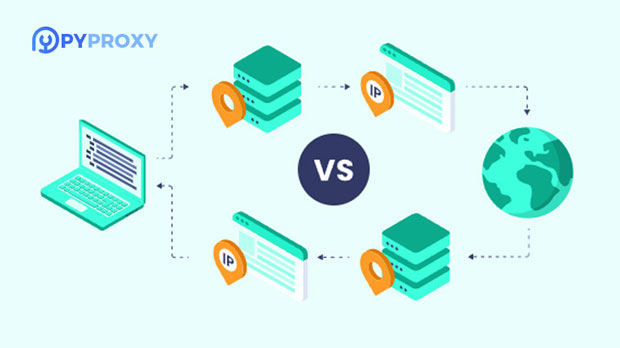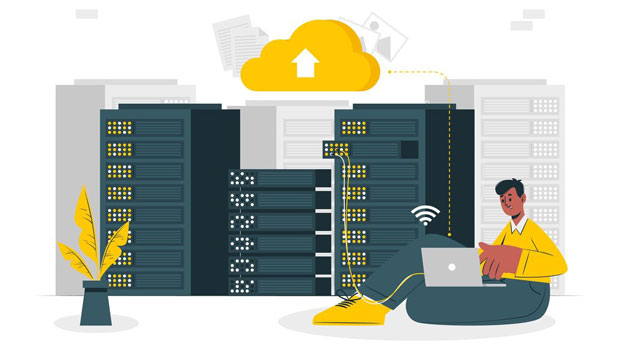When considering the purchase of residential proxies for sale, it is essential to understand the critical performance metrics that directly impact the effectiveness and reliability of the proxies. Residential proxies are valuable tools for anonymity, security, and accessing geo-restricted content, but not all proxies are created equal. The performance of these proxies can vary significantly based on several factors, including speed, IP rotation frequency, location variety, bandwidth, and reliability. In this article, we will explore the key metrics to consider before making a purchase, ensuring you choose a service that meets your specific needs while offering optimal performance and value. 1. Speed and LatencyOne of the most crucial performance indicators for residential proxies is their speed and latency. Speed is a measure of how fast data can be transmitted between the proxy server and the user’s device, while latency refers to the time delay before a transfer of data begins. A high-speed residential proxy is essential for tasks such as web scraping, accessing streaming content, or conducting market research. On the other hand, high latency can lead to lagging performance, which could disrupt your activities.When evaluating the speed of a residential proxy service, it's vital to check if they provide consistent performance, even under heavy load. Proxies that offer low latency are particularly important for real-time applications like gaming, video streaming, or trading, where every millisecond matters.2. IP Rotation FrequencyAnother key metric to consider is the frequency of IP rotation. Residential proxies generally work by routing requests through real user devices, and these devices are assigned different IP addresses. The more frequently the IP address rotates, the more anonymity and security you gain. A high rotation frequency ensures that your identity remains masked, preventing websites from detecting your activities and blocking your access.Proxies with low IP rotation might increase the risk of detection, making your actions more traceable. Depending on your intended use, it's essential to find a balance between frequent rotation and stability. For web scraping, for example, rotating the IPs every few minutes is ideal to avoid blocking.3. Geographic Location VarietyGeographic location variety is another critical factor when selecting residential proxies. Depending on your needs, you may require proxies located in specific countries or regions. For instance, if you need to access content that is only available in the United States, you will want proxies located within the country. Similarly, if your goal is to collect localized data, such as performing competitive analysis or checking search engine results from different locations, the geographical variety of proxies becomes essential.Most residential proxy providers offer proxies from different countries, but not all of them have global coverage. Ensuring that the provider supports the specific locations you need is vital to avoid restrictions or performance limitations when accessing geo-restricted content.4. Bandwidth and Data LimitsBandwidth and data limits are also important performance metrics to consider. Residential proxies are often sold with specific bandwidth caps or data usage limits. It's important to assess your expected usage volume before purchasing a proxy service to ensure you choose a plan that fits your needs.For tasks such as web scraping or streaming, high bandwidth is crucial to prevent throttling or slow speeds. Proxies with generous or unlimited data plans will give you more flexibility and freedom to perform your tasks without worrying about running out of data mid-operation.5. Reliability and UptimeReliability and uptime are critical factors in ensuring that your proxy service remains available and functional. If you're using residential proxies for business operations, such as market research or competitive analysis, downtime can cause disruptions and impact your results. A provider that guarantees a high level of uptime ensures that their proxies will be available when you need them, minimizing the risks of encountering downtime.It’s advisable to select providers that offer SLAs (Service Level Agreements) specifying their uptime guarantee. A 99.9% uptime is generally considered excellent, but some providers offer even higher guarantees.6. Customer SupportEffective customer support is often overlooked but is essential for troubleshooting any issues you may encounter. When purchasing residential proxies, you should look for a provider that offers responsive, knowledgeable, and easily accessible customer support. Whether it's assisting with setup, troubleshooting slow speeds, or resolving IP issues, having a reliable support team can save time and frustration.Check if the proxy provider offers multiple communication channels, such as email, live chat, and phone support. Providers that offer 24/7 support are generally more reliable, as they can help you resolve issues at any time.7. Security and AnonymitySecurity and anonymity are at the core of what residential proxies offer. Before purchasing, ensure the provider employs secure encryption methods, such as SSL, to safeguard your data. Some proxy services might inject additional tracking scripts or expose your data to third parties, compromising your privacy. Always opt for providers with strict no-logs policies and who prioritize your security.In addition, it's important to assess whether the proxy provider’s network is secure and resistant to attacks like DNS leaks or IP leaks, which could compromise your anonymity.8. Pricing and Value for MoneyWhile it’s tempting to choose the cheapest option, it’s essential to assess the value for money. Cheap proxies may not offer the best performance, and they may come with limitations such as slow speeds, limited bandwidth, or poor reliability. It’s better to choose a well-rounded residential proxy service that offers a fair price for the quality it provides.Consider factors like the number of IP addresses available, the frequency of IP rotation, geographical coverage, and the level of support provided. Weigh these factors against the pricing structure to ensure that you are getting the best possible value for your investment.9. Integration and Ease of UseThe ease of integrating residential proxies into your systems is another aspect to consider. Some providers offer user-friendly dashboards or APIs that allow for easy configuration and management. If you need to integrate proxies into your existing tools, check if the provider supports third-party integrations or offers setup guides.For those with limited technical expertise, it’s beneficial to choose a provider that offers ready-to-use solutions and simple configuration options. A good residential proxy service should make the process of getting started straightforward, with minimal effort required on your part.10. Reputation and ReviewsFinally, one of the most important factors in choosing a residential proxy provider is their reputation. Look for reviews and testimonials from other users to gauge the provider's credibility and trustworthiness. A reputable provider will have positive feedback about their proxies’ performance, customer support, and overall reliability.You can also check online forums, review websites, or social media platforms to get real-world insights into how the provider performs in actual use cases. If the provider has a good reputation and offers proven results, they are likely to meet your expectations.Understanding the key performance metrics before purchasing residential proxies for sale ensures that you make an informed decision. Speed, IP rotation frequency, geographic location variety, bandwidth, reliability, and customer support are just a few of the essential factors to consider. Additionally, ensuring security, value for money, ease of use, and the provider’s reputation will help you select a high-quality proxy service that aligns with your needs. By focusing on these metrics, you can enhance your online experience, protect your privacy, and achieve the results you're looking for in your specific tasks.
Aug 21, 2025



































































